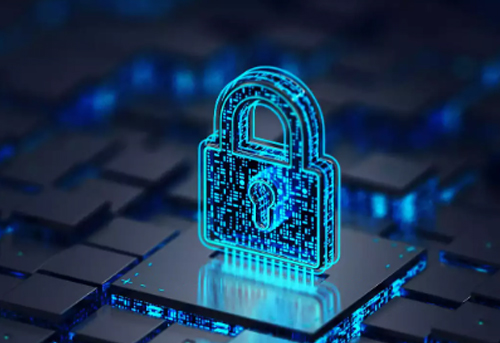Large Corporations
Cybersecurity for large corporations is critical in today’s digital landscape, where cyber threats are growing in sophistication and scale. Given the massive amounts of sensitive data and complex IT infrastructures involved, large corporations must implement a multi-layered, proactive cybersecurity strategy that addresses the full spectrum of risks.
Here’s a breakdown of key considerations, strategies, and best practices for cybersecurity in large corporations:
1. Governance and Risk Management
Cybersecurity Frameworks: Adopt internationally recognized frameworks like the NIST Cybersecurity Framework, ISO/IEC 27001, or CIS Controls to guide your approach to cybersecurity governance.
Risk Assessments: Regularly conduct risk assessments to identify potential vulnerabilities, evaluate the likelihood and impact of different threats, and prioritize mitigation strategies accordingly.
Board-Level Involvement: Ensure cybersecurity is a top priority for the board of directors and senior leadership. This includes having dedicated cybersecurity experts on staff or on advisory teams to help make strategic decisions.
2. Identity and Access Management (IAM)
Zero Trust Architecture: Implement a Zero Trust model where every user or device, both internal and external, is continually authenticated and authorized before accessing any corporate resource.
Multi-Factor Authentication (MFA): Enforce MFA across all critical systems and applications to add an additional layer of defense against credential-based attacks.
Role-Based Access Control (RBAC): Limit access to sensitive data and systems based on an employee’s role within the organization. Ensure the principle of least privilege is applied.
3. Endpoint Security
Endpoint Detection and Response (EDR): Deploy EDR tools to monitor, detect, and respond to suspicious activity on endpoints (e.g., laptops, desktops, servers, mobile devices).
Patch Management: Maintain a rigorous patch management program to ensure that all operating systems, applications, and third-party software are up to date and free from known vulnerabilities.
Antivirus and Anti-malware: While antivirus tools are not enough by themselves, they remain a core component of endpoint protection.
4. Network Security
Firewalls and Intrusion Prevention Systems (IPS): Use next-gen firewalls and IPS to protect the network perimeter and detect suspicious traffic patterns or malicious activities.
Network Segmentation: Segment the network to limit lateral movement within the organization in case of a breach. Sensitive data and critical systems should reside in isolated, secured segments.
Virtual Private Networks (VPNs): Secure remote access for employees, especially those working from home, using strong encryption protocols.
5. Data Protection and Encryption
Data Encryption: Encrypt sensitive data both at rest and in transit to protect it from unauthorized access, even if attackers manage to breach the network.
Data Loss Prevention (DLP): Implement DLP solutions to monitor and control data transfers, ensuring sensitive information doesn’t leave the organization without authorization.
Backup and Disaster Recovery: Regularly back up critical data and test disaster recovery processes to minimize data loss and downtime during an attack or incident.
6. Threat Intelligence and Monitoring
Security Information and Event Management (SIEM): Implement SIEM systems to aggregate, analyze, and monitor security data from across the enterprise in real time, enabling early detection of potential threats.
Threat Intelligence Feeds: Subscribe to threat intelligence services to stay updated on emerging threats, vulnerabilities, and attack techniques that may target your industry.
SOC (Security Operations Center): Establish or partner with a SOC to provide 24/7 monitoring, incident detection, and rapid response.
7. Incident Response and Crisis Management
Incident Response Plan: Develop a comprehensive incident response (IR) plan that includes clear roles and responsibilities, communication protocols, and steps for containment, eradication, and recovery from a breach.
Tabletop Exercises: Regularly run simulated cyberattack scenarios (tabletop exercises) to test your IR team’s readiness and improve the response process.
Third-Party Support: Engage external cybersecurity experts or firms to assist in high-stakes scenarios, especially during major data breaches or ransomware attacks.
8. Third-Party Risk Management
Vendor Risk Management: Implement a robust vendor risk management program to evaluate the cybersecurity posture of third-party vendors and service providers who have access to your systems or data.
Supply Chain Security: Work with your suppliers and partners to ensure that their cybersecurity practices meet your standards, as vulnerabilities in the supply chain can lead to attacks like data breaches or ransomware infections.
9. Employee Training and Awareness
Security Awareness Programs: Provide regular training to employees about common cyber threats such as phishing, social engineering, and password hygiene.
Simulated Phishing Attacks: Conduct simulated phishing campaigns to test employees’ ability to identify malicious emails and improve awareness.
Security Culture: Foster a security-first mindset across the organization, where employees are encouraged to report suspicious activity, and cybersecurity is seen as a shared responsibility.
10. Compliance and Legal Considerations
Data Privacy Regulations: Ensure compliance with global data privacy regulations such as GDPR, CCPA, HIPAA, and others that may apply to your industry and geographic location.
Incident Notification Requirements: Understand the legal and regulatory requirements for notifying stakeholders (including customers, regulators, and the public) in the event of a data breach or cybersecurity incident.
Auditing and Reporting: Maintain thorough logging and auditing practices to support regulatory compliance, and prepare for regular cybersecurity audits.
11. Emerging Technologies
AI and Machine Learning: Leverage AI and ML to detect anomalous behavior, predict potential threats, and automate responses to certain types of attacks.
Blockchain for Security: Explore blockchain technology for secure, transparent transaction recording and for securing sensitive data.
Quantum Computing: Although still in the early stages, quantum computing is expected to have a significant impact on encryption methods. Companies should start considering long-term strategies for post-quantum cryptography.
